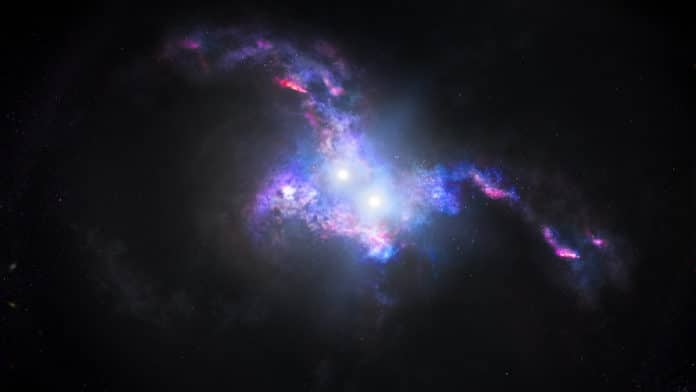Peering back 10 billion years into the universe’s past, NASA’s Hubble Space Telescope detected a pair of quasars that are so close to each other. Because of their proximity, they appear as a single object.
According to scientists, the reason behind this proximity is that they reside in the cores of two merging galaxies.
The group proceeded to win the “daily double” by finding one more quasar pair in another colliding galaxy duo. The discovery of these four quasars offers a new way to probe collisions among galaxies and merge supermassive black holes in the early universe.
Lead researcher Yue Shen of the University of Illinois at Urbana-Champaign said, We estimate that in the distant universe, for every 1,000 quasars, there is one double quasar. So finding these double quasars is like finding a needle in a haystack.
Research team member Nadia Zakamska of Johns Hopkins University in Baltimore, Maryland, said, This truly is the first sample of dual quasars at the peak epoch of galaxy formation. We can use it to probe ideas about how supermassive black holes come together to form a binary eventually.
Quasars make a profound impact on galaxy formation in the universe. Finding dual quasars at this early epoch is essential because we can now test our long-standing ideas of how black holes and their host galaxies evolve together.
The quasars aren’t traveling through space in any quantifiable manner. Yet, their wiggle could be proof of random fluctuations of light as every individual from the quasar pair varies in brightness. Quasars glint in brilliance on timescales of days to months, contingent upon their black ole’s feeding schedule. This alternating brightness between the quasar pair is similar to seeing a railroad crossing signal from a distance. As the lights on both sides of the stationary signal alternately flash, the sign gives the illusion of “jiggling.”
Journal Reference:
- Shen, Y., Chen, YC., Hwang, HC. et al. A hidden population of high-redshift double quasars unveiled by astrometry. Nat Astron (2021). DOI: 10.1038/s41550-021-01323-1
